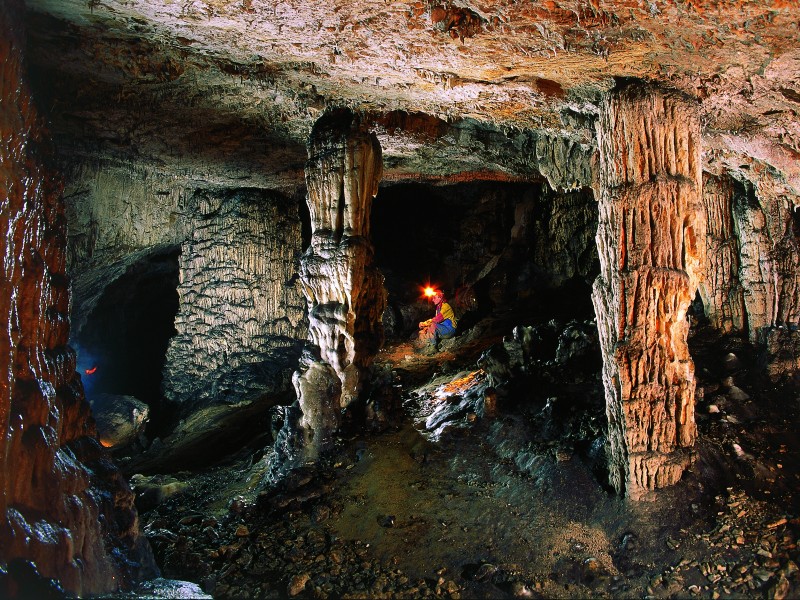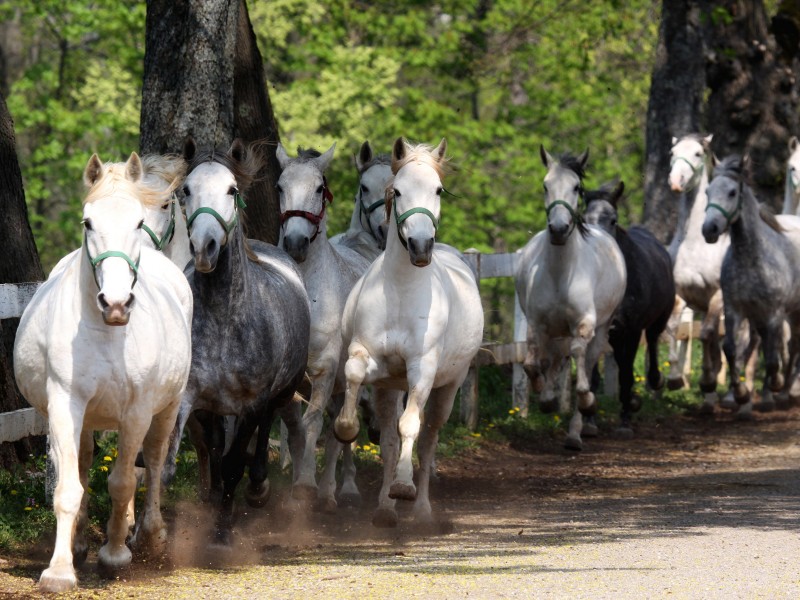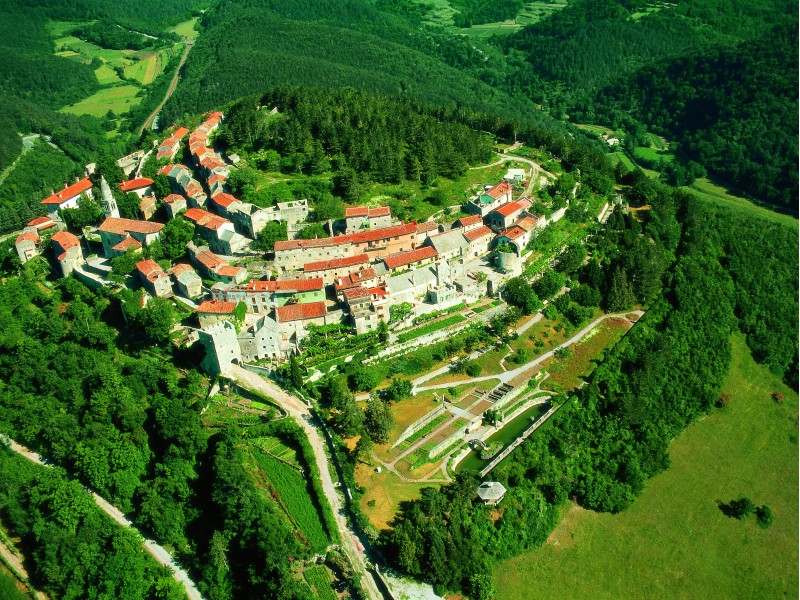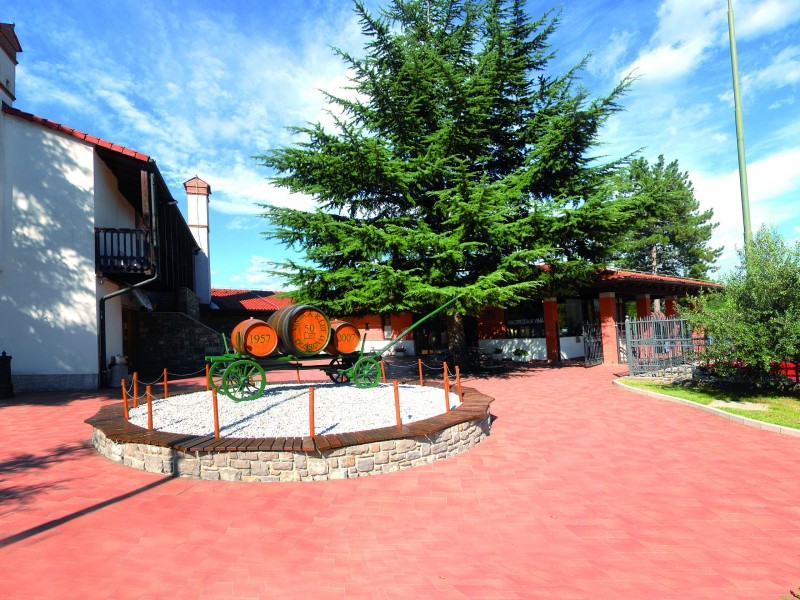THE ŠKOCJAN CAVES - LIPICA - ŠTANJEL
Departure from Ljubljana towards Divača on the highway to the protected park Škocjan Cave park, where the local guide takes us into the underground world of the majestic Škocjan caves, which are listed as a Unesco world heritage site.
With the size of their halls and underground streams, Škocjan caves hold a special place among seven thousand of Slovenia’s caves. The structure of Škocjan caves consists of eleven caves, sinks, natural bridges and cuttings.
When we reach the surface, the tour continues to Lipica, a place well known for the unique breed of horses, namely Lipizzaners. In Lipica, we’ll take a peak in the breed house, admire the noble stallions and watch them in their elegant performance.
Our road leads from Lipica to the old city of Štanjel, situated at the top of Turn hill. Štanjel is an ancient medieval city with the city walls still intact. A walk around the small town will be perfect to end the trip, as Štanjel is full of romantic narrow streets, the old castle above and the church of Saint Daniel. A degustation of fine Slovenian wine will be in place to end the day and return to Ljubljana.
The Škocjan caves
The Škocjan Caves with spaciousness of their halls and underground gorge have a special place among more than seven thousand caves in Slovenia. Namely, they consist of eleven caves, sunk Karst valleys, sinkholes, natural bridges … |
Lipica
|
|
|
Due to their unique natural and cultural heritage, they have been listed as a Unesco world heritage site since 1986. They are situated in the Karst region, where the name Karst has made its way to the world. The caves are beautified by manycoloured, also giant stalactites of various remarkable shapes, curtains, and big waterfilled hollows.
The main attraction is the Great Water – the river Reka with its waterfalls and roaring rapids, which eventually calm down in pools and lakes. Calm water reflects interesting and surprising cave images. |
Lipica is a cultural monument of European and global reputation.
Over four centuries old famous stud farm, the cradle of Lipizzan breed is situated by the Slovene-Italian border, with paths surrounded by 60 to 100 years old trees on both sides. It was established in 1580 by archduke Karel II.
Today, Lipica is a tourist and recreational centre. It is not interesting only because of the stud farm and its white beauties, described even by Vlavasor (the founder of scientific literature on Slovenian territory), but can also boast of with the variety of activities.
|
Classical dressage riding school performances are an unforgettable experience. Even before the establishment of the stud farm, Carst mares were bred on the Lipica estate and mated at the wish of the Vienna court with Andalusian, Italian, Danish, and later Arab stallions.
The result was the Lipizzaner, a unique horse breed of medium size about 160 centimeters in height. It has lively eyes and an intelligent look, a muscular neck carried high, and a thick tail. The legs are strong and muscular and the hooves firm for movement on the rocky karst terrain. A settled and gracious gait, a long life span, and a great learning ability distinguish the Lipizzaner from other horse breeds, and as such it is more suitable for haute école training. Its beauty can best be observed in motion, namely its charm is hidden in the harmony of movements. |
Štanjel |
Botanical garden Sežana |
|
Štanjel is a picturesque karst settlement, arranged in a terraced manner towards the 363m high hill Turn. The features of the settlement are narrow streets with stone built houses characterised by stonecutting products, such as stone made gutters, entrance portals, fountains ...
Due to its geographical and strategic position, it was of great importance already back in the Iron age. It achieved its greatest prosperity in the Roman times, when it started expanding towards the top of hill Turn. In the 11th and 12th century, the hill was fortified and the remains of the towers can still be seen.
At the end of the 15th century (until the middle of the 16th century), in times of Turkish invasions, the whole settlement was fortified with a defence wall. Today’s image is characterized by the renaissancebaroque castle and the church of St. Daniel with its typical bell tower. A popular sight is also the Ferrari Garden, designed by a famous architect Maks Fabiani. |
The beginnings of the park reach back to the year 1848. The park grew and expanded through time, since it had been continuously planted with various plants and seeds from different parts of the world.
It is a home of 198 tree species and several hundred species of exotic potted plants. Reigning among the most beautiful trees in the park are the Azure Lebanon cedar, Bornmuller fir tree, Spanish fir tree, Mammut tree, ...
The park is attractive for older visitors and nature lovers, as well as for school groups, since it offers opportunities to learn about pretty rare representatives of local and foreign plants.
It is especially suitable for school education days, because a guided tour includes a multivision about the park in a special multimedia room, and a visit of photographic exhibition (park from the times of Scaramanga family), plants in the park, archaeological collections and a collection Dinosaurs from Kozina.
|










